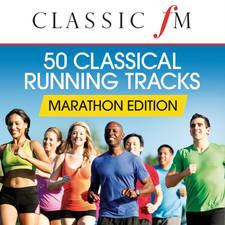Washington school band rehearses in pop-up tents to curb spread of COVID-19
25 February 2021, 11:53 | Updated: 25 February 2021, 12:13

Even in pandemic times, life goes on and music finds a way…
A Washington high school has found an inventive – and admittedly, hilarious – way for its students to make music in pandemic times.
Since returning to in-person learning, the Wenatchee High School in Washington state (US) has provided its musically inclined students with individual pop-up tents for band rehearsals.
Each student is zipped into their own pop-up tent, with their instrument. Together, the tent-wrapped musicians play while also social distancing six feet apart. The band also rehearses in shifts, to reduce social contact and the chance of spreading COVID-19.
It comes as students on the eastern side of Washington state return to schools, following a long period of remote learning.
According to Wenatchee World, sophomore Alison Chamberlain can be seen playing the saxophone in a single tent spaced out from fellow band mates, who all have their eyes on the conductor.
The daily newspaper also reports that student Juan Cruz could be seen struggling to fit inside the enclosed space, as he attempted to play the sousaphone during Tuesday’s Wenatchee High School band practice.
All we can say is, poor guy. We’re betting he couldn’t see much out of that plastic window by the end of the rehearsal…
This is a high school band practice in Wenatchee,WA pic.twitter.com/q2prCJemX0
— Ari Hoffman (@thehoffather) February 24, 2021
Read more: Cello concert held a swimming pool during COVID-19 times >
A similar approach to music-making in pandemic times was tried and tested in Oklahoma at the beginning of this year, when rock band The Flaming Lips staged a unique pair of gigs hosting musicians and audience members inside giant inflatable bubbles.
While no spike in cases was reported after either event, health experts have since questioned the safety of the approach without further testing.
“I’d need to see how the air exchange was occurring between the outside and the inside,” Dr. Eric Cioe-Peña, director of global health at Northwell Health, told The New York Times, “To be able to say if it were safe overall or reduced risk of transmission.”


































